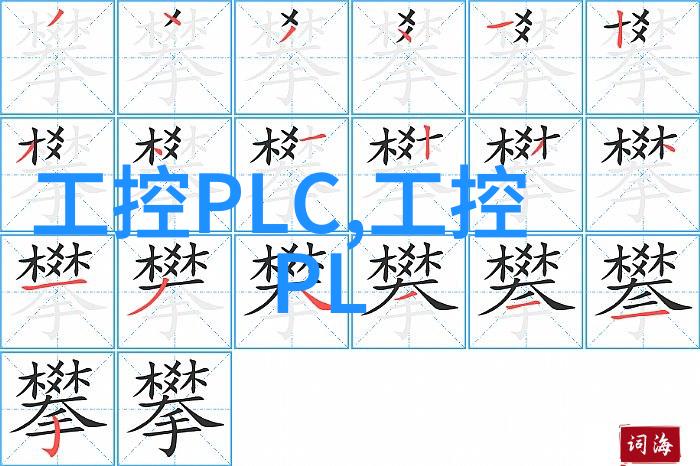您现在的位置是: 首页 - PLC - 医院水处理设备在确保医疗卫生安全中的重要性探究 PLC
医院水处理设备在确保医疗卫生安全中的重要性探究
2025-05-19 【PLC】 0人已围观
简介一、引言 随着科技的不断发展,医院水处理设备的种类和功能也日益丰富,它不仅仅是保证患者饮用水质量的手段,更是维护整个医疗环境安全与健康的关键。然而,这些设备背后隐藏着复杂的技术问题和严格的管理要求。本文旨在探讨医院水处理设备在保障医疗卫生安全方面所扮演的角色,以及如何通过科学合理地设计和运营这些系统来提高整体医疗服务水平。 二、医院水处理设备概述 hospitals water
一、引言

随着科技的不断发展,医院水处理设备的种类和功能也日益丰富,它不仅仅是保证患者饮用水质量的手段,更是维护整个医疗环境安全与健康的关键。然而,这些设备背后隐藏着复杂的技术问题和严格的管理要求。本文旨在探讨医院水处理设备在保障医疗卫生安全方面所扮演的角色,以及如何通过科学合理地设计和运营这些系统来提高整体医疗服务水平。
二、医院水处理设备概述

hospitals water treatment devices are the cornerstone of ensuring the safety and quality of drinking water for patients, staff, and visitors. These systems include various types of equipment such as reverse osmosis (RO) systems, ultrafiltration (UF) systems, activated carbon filters, UV disinfection units, and distillation apparatus.
三、为什么需要高效的水处理系统?

A high-efficiency water treatment system is crucial in hospitals due to the following reasons:
Patient Safety - Patients often have weakened immune systems making them more susceptible to infections. Therefore, it is essential to ensure that their drinking water is free from contaminants.
Waterborne Pathogens - Hospitals are hotspots for a variety of microorganisms including bacteria, viruses and parasites which can contaminate the water supply if proper precautions are not taken.

Regulatory Compliance - Hospitals must adhere to strict guidelines set by regulatory bodies such as WHO and EPA regarding water quality standards.
四、如何选择适合医院需求的水处理设备?
Selecting appropriate hospital-grade water treatment devices requires careful consideration of several factors:

Flow Rate Requirements - The device should be able to handle the volume of incoming water based on hospital needs.
Contaminant Removal Capabilities - The device should be designed to remove a wide range of contaminants including bacteria, viruses, parasites and chemicals.
Maintenance Requirements - Regular maintenance is critical for optimal performance; therefore easy-to-clean designs with minimal parts count are preferred.
五、操作与维护策略
Effective operation and maintenance strategies play a vital role in maintaining efficient performance over time:
Regular Monitoring & Testing: Periodic monitoring of treated water parameters ensures compliance with regulatory requirements while identifying any potential issues before they become major problems.
Proper Installation: Proper installation techniques help prevent contamination or damage during setup reducing downtime risks later on.
六、案例研究:成功实施医院级别空气净化系统的事例分析
The success story highlights how effective planning implementation resulted in significant improvements in patient care outcomes at XYZ Hospital through improved air quality management using advanced HEPA filtration technology integrated into existing HVAC system
七、高效利用资源:节能环保考虑在设计过程中应用到的方法。
Incorporating energy-efficient components like LED lighting fixtures solar panels into hospital design promotes sustainability while saving operational costs through reduced energy consumption.
八、新兴技术与未来趋势:智能化控制及无人机采样检测技术对提升现有设施性能潜力的影响。
Smart control technologies enable remote monitoring real-time data analysis allowing healthcare facilities better manage resources optimize operations thereby improving overall efficiency levels even further when combined with advancements like drone sampling detection methods offering increased accuracy speed reliability
九结论:
Hospital Water Treatment Devices: Ensuring Medical Hygiene Through Technological Innovation has highlighted various aspects related to medical facility’s need for robust infrastructure safeguarding public health wellbeing among patients staff visitors alike This article serves as an informative guide assisting decision-makers engineers technicians policymakers understand complexities surrounding these crucial tools thus enabling them make informed choices promote sustainable practices contribute towards building healthier communities worldwide






